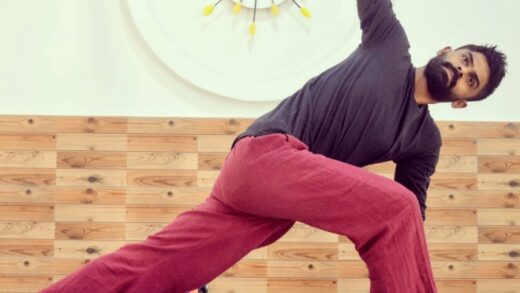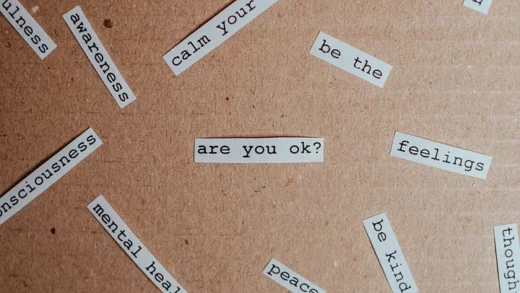
After almost a year, I managed to plan this sacred & mind-bending course of Vipassana. I guess when we look for answers we are curious to try pretty much anything & everything. The same was the case with me. I have been contemplating questions like “what am I”, “what’s my purpose”, and “what do I want”, etc. for a very long time now. This leads me to consider this 10 days course. Although I wanted to do this since 2020, I don’t think one can force such things to happen. It happened when it was supposed to happen. And I am content that it did.
What is Vipassana?
Vipassana is an intense meditation course founded by Satya Narayana Goenka in 1969, who learned this technique from his teacher for 14 years and later started teaching it to others.
It’s a 10 days course, where you stay in the centre with no phone, no violence, no talk, no lies, no sexual activity, no fancy food or dinner, no exercise or other physical activities (except walking), no reading or writing or any hobbies, complete SILENCE in all forms.
Well, what do we do you wonder then?
You meditate, almost all day. In short, your day starts at 4:30 am and finishes at 9 pm. In total, you are expected to sit & meditate for about 10 hours every day in that window of about 16 hours. Yes, you read that right, 10 hours. Apart from this, there will be 1–1.5 hours of discourse at the end of each day by Acharya Goenka Ji. You do get 1 & 1.5 hours of 2 breaks after breakfast & lunch respectively and some 5–10 min of breaks after every session.
To know more, check the Code of discipline
What’s the objective?
The primary goal of Vipassana is to come out of the cycle of pleasure & pain (Raaga & Dwesha in Sanskrit) which is the major cause of our suffering in life. Moreover, to understand that “Nothing is permanent”. Also, to learn what is PURE DHARMA. To understand all this, not only at an intellectual level but also at an experience level.
To know more, click here.
My experience
It was tough! Really tough. And I’m proud to say that I made it to the end of the course. I know some people who are big fans of Vipassana practice & do it often. Yet, for beginners, it can be onerous. I’ve even seen people on the Internet use words such as torture, sect, and so on due to its excessiveness. I can’t blame them. Indeed, it may be perceived that way.
What makes it difficult, is not waking up so early for 10 days, food or silence as we all get used to these things in a day or 2, but it is to “sit & meditate”. Why? Because you are expected to sit straight for 1 hour without moving. And this too, several times in a day. Oops! As a result, you get all kinds of aches in your body right after your first round of practice on the very first day. This is due to the restriction on sitting and not moving, I figured. Of course, you can move or adjust, which I did dozens of times, in the initial days but as the days pass, you must refrain from doing so. Hence, as every hour passes, your mind wanders, gives you all the possible reasons to move, and questions everything about your life and above all, thoughts, especially negative ones. In my course, there were about 10 people out of 90 approx who quit. Why? because they couldn’t take it. I supposed some missed their home and others hated the discomfort the practice caused.
I, on the other hand, was completely convinced about the course and thanks to that, I didn’t even think for a moment about quitting.
Being an early morning person, waking up at 4 wasn’t too difficult.
Skipping the meal in the evening was easy.
No talking, not a big deal.
But, it doesn’t mean that the whole process became easy for me. These were small challenges compared to the main part: Meditation; finding 5–10–15 min here & there, trying to be in Viparita karani pose or in others to relax the spine, or using 1 pillow, then 2 and later 3 to be able to immobile for straight 20 min while meditating. Well, Nothing helped. Then, I saw that people were using chairs or back support. I thought maybe I should try the same. But after 3–4 days I realised, none could help actually. Our bodies & mind would get used to that too. You must stay still & let the mind adapt and with time I saw that it did. Magic!
The days continued…
My struggle
I couldn’t practice Vipassana except for a very short duration of time. The technique of Vipassana meditation is to rotate your awareness across different parts of the body and acknowledge sensations. Voilà. You are not supposed to add, modify or delete anything in this process. But I did. I added my breath to it. I regulated my breath along with the rotation. Due to this, my body used to get stiff and I couldn’t focus for long. Furthermore, in later days when I realised this, I tried to stop this regulation but I ended up forcing the whole thing which causes more hindrance in the actual process.
Nevertheless, there were some moments when there was no interference with my breath. I was able to focus purely on sensations and those moments were enough to give me an idea of how powerful this practice is. In the end, I am glad after all because even though I couldn’t practice much, I did my best, I was determined and understood what Vipassana is all about. Now, I can’t wait to improve my practice and do it again.
What I gained
I learned a lot, however here I have summed up some key points (We all know these points. The catch is, we get the experience & feel it by ourselves. Which is astonishing)
- My FOCUS got high since the time I came back. I wonder how long it will last, but I will surely maintain my quotidian practice.
- DISCIPLINE is the key — Following specific rules to achieve something big, we must need discipline. It’s not possible without it.
- Determination plays a vital role — I am so proud of myself that not even for a moment does my mind thinks of quitting. I loved discovering about myself that if I am convinced to do something, how honest & dedicated I can be. #Powerful
- Simple things can be complicated but they are ones we need — Sit, focus on your breath & don’t move. Sounds so simple, isn’t it? Try it for 30 min. You will see all kinds of itching you get even without mosquitoes.
- I must TAME my Monkey Mind — Our minds can make us believe almost anything if it’s not in our control. Again, try sitting for 30 min, don’t move and see by yourself.
What not to do in Vipassana
Of course stick with the rules to keep it fair. Besides, one thing I can’t stress enough is do not add, modify or delete anything in the process.
Conclusion
I would recommend this course to everyone to try at least once. If you are thinking to do it, go for it. Otherwise, if you are someone who
Overthink. Try Vipassana.
Have relationship issues. Try Vipassana.
Stress a lot. Try Vipassana.
Have family issues. Try Vipassana.
Have mental health issues. Try Vipassana. (severe cases are exceptions)
Think you don’t have a purpose in life. Try Vipassana.
Hate people. Try Vipassana.
Doesn’t see growth in his/her life. Try Vipassana.
However, we must understand, that Vipassana practice is a technique or a tool to improve your life or to learn how to live life. This is not the solution to your practical problems. As said, Vipassana won’t get you your dream job but it will make you stronger and get you the necessary focus to acquire it. It will make you clearer, more patient, disciplined, honest, determined, compassionate & calmer. This is how we become stronger to achieve anything we want and be happy in life. Right?
I hope this post gives you a brief about Vipassana and also inspired you a little to do it.
If in case I missed anything, please do not hesitate to ask, I would be happy to answer your questions.
Peace & love!
Connect with me on LinkedIn! 🙂



Recent Comments